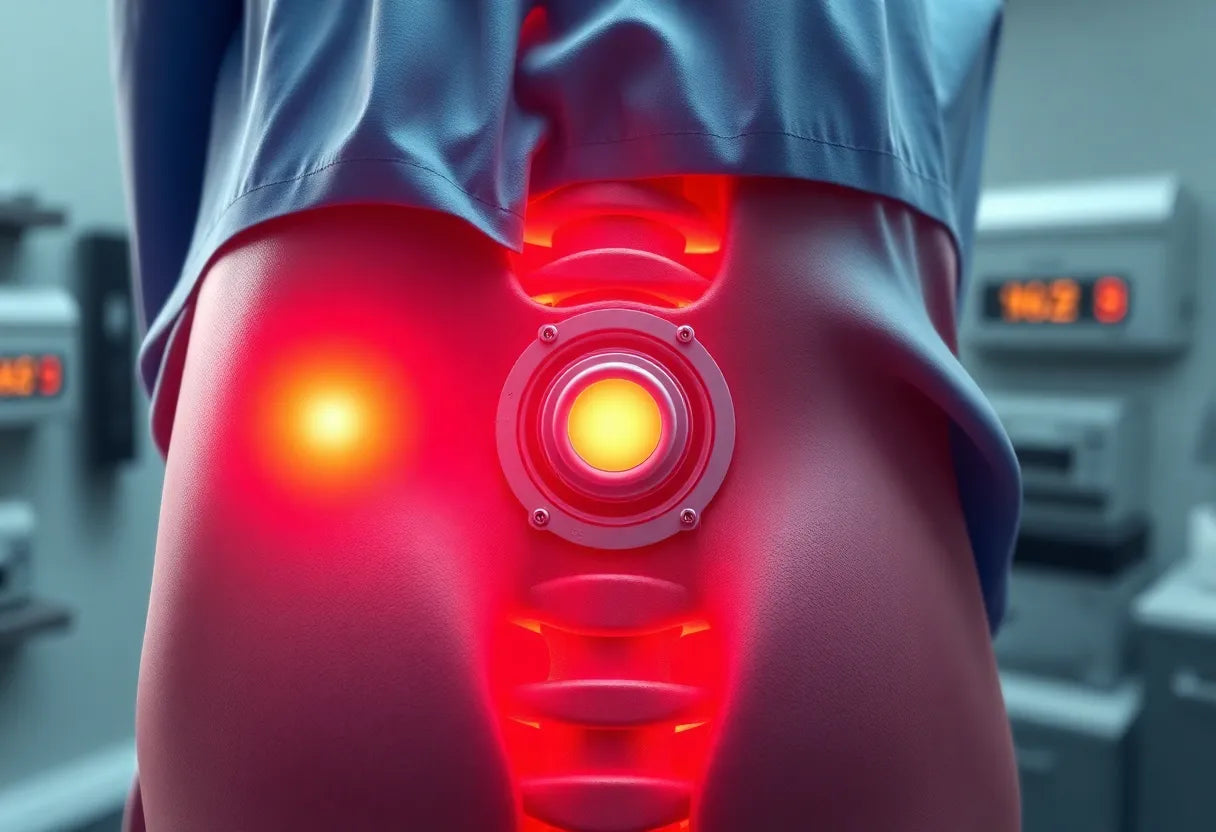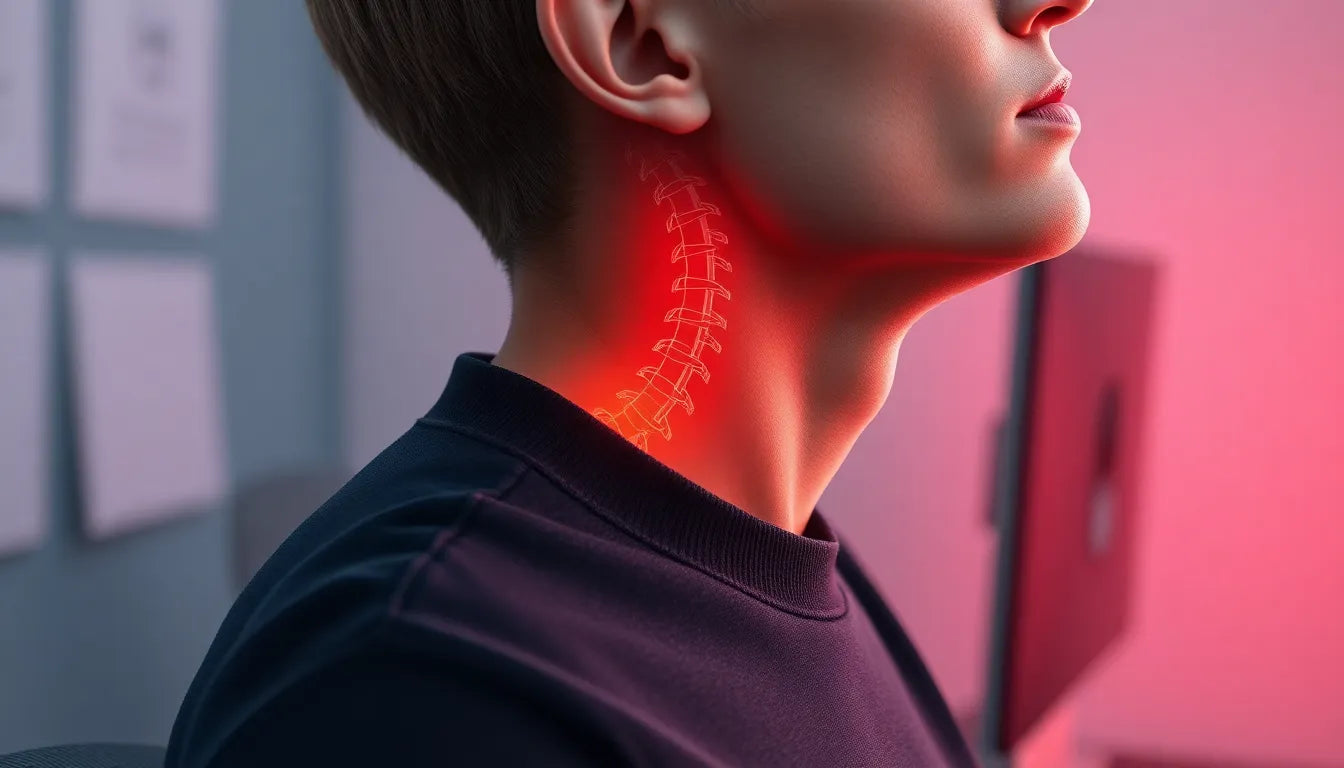Understanding the complexities of a herniated disc in the neck can be crucial for anyone experiencing persistent neck pain or discomfort. A herniated cervical disc occurs when the soft inner gel of a spinal disc protrudes through its tougher outer layer. This condition often arises from wear and tear or sudden injuries, leading to the compression of nearby nerves. The symptoms are not only limited to neck pain but can extend to numbness, tingling, or weakness in the arms and shoulders, making everyday tasks challenging.
Recognizing the symptoms and importance of early treatment
Identifying the symptoms early on can significantly impact the management and outcome of a herniated disc in the neck. Common signs include sharp or dull pain in the neck, radiating pain down the arms, and decreased strength in the shoulders or hands. Some individuals may also experience headaches or a loss of sensation in certain areas. These symptoms can vary in intensity, but they often become more pronounced with certain movements or activities. Early diagnosis and treatment are vital to prevent further complications, such as chronic pain or permanent nerve damage.
The impact on daily life
A herniated disc in the neck can significantly affect one's quality of life, influencing both physical and emotional well-being. Pain and discomfort can make it difficult to perform daily activities, such as driving, working, or even sleeping. The constant presence of pain can lead to frustration and stress, affecting mental health. Therefore, the primary goals of treatment are to alleviate pain, improve mobility, and prevent further injury. By addressing these aspects, individuals can regain their independence and improve their overall quality of life.

Women's Posture Shirt™ - White
Forbedrer din holdning og kan lindre smerter i nakke, skuldre og ryg.
In the subsequent sections, we will delve deeper into the various treatment options available, ranging from conservative approaches like medication and physical therapy to surgical interventions for more severe cases. Understanding these options can empower individuals to make informed decisions about their health and recovery journey.
Conservative treatment options for herniated discs in the neck
When it comes to treating a herniated disc in the neck, conservative methods are often the first line of defense. These approaches aim to alleviate pain and improve function without the need for surgery. Among the most common conservative treatments are medications, physical therapy, and alternative therapies.
Medications for managing pain and inflammation
Medications play a crucial role in the conservative management of herniated discs. Non-steroidal anti-inflammatory drugs (NSAIDs) are frequently prescribed to reduce inflammation and alleviate pain. These medications can be particularly effective in managing acute symptoms and allowing patients to engage in other therapeutic activities. In cases where muscle spasms are present, muscle relaxants may be used to provide relief. For more severe pain, corticosteroids might be administered, either orally or through injections, to reduce inflammation directly at the site of the herniation.
Physical therapy for strengthening and flexibility
Physical therapy is another cornerstone of conservative treatment, focusing on strengthening the neck muscles and improving flexibility. A skilled physical therapist can develop a personalized exercise regimen tailored to the individual's specific needs and condition. Techniques may include stretching exercises to enhance range of motion, strengthening exercises to support the cervical spine, and posture correction to reduce strain on the neck. These interventions not only help in alleviating symptoms but also play a preventive role in avoiding further injury.

Men's Posture Shirt™ - Black
Aktiverer og stimulerer musklerne for at forbedre holdningen og mindske nakkesmerter.
Alternative therapies for complementary care
In addition to traditional methods, alternative therapies such as chiropractic care and acupuncture have gained popularity as complementary treatments. Chiropractic adjustments aim to improve spinal alignment, potentially reducing nerve compression and pain. Acupuncture, on the other hand, involves the insertion of fine needles into specific points on the body to promote natural healing processes. While evidence supporting these therapies varies, many patients report significant symptom relief, making them worthwhile considerations in a comprehensive treatment plan.
Surgical treatment options for severe cases
For individuals who do not respond to conservative treatments, or in cases where neurological symptoms are severe, surgical intervention may be necessary. Surgical options are designed to relieve pressure on the nerves and stabilize the cervical spine.
Anterior cervical discectomy and fusion (ACDF)
One of the most common surgical procedures for a herniated disc in the neck is Anterior Cervical Discectomy and Fusion (ACDF). This procedure involves removing the herniated disc and fusing the adjacent vertebrae to prevent further movement and compression. ACDF has a high success rate, with many patients experiencing significant pain relief and improved function. Recovery typically involves a period of rest followed by physical therapy to restore strength and mobility.
Artificial cervical disc replacement
Another surgical option is artificial cervical disc replacement, which aims to preserve neck motion by replacing the damaged disc with a prosthetic one. This procedure is often chosen over fusion in younger, active patients who wish to maintain greater range of motion. The decision between ACDF and disc replacement depends on various factors, including the location of the herniation and the patient's overall health and lifestyle.
Minimally invasive techniques
Advancements in surgical technology have led to the development of minimally invasive techniques, such as minimally invasive posterior discectomy. These procedures offer the advantage of smaller incisions, reduced recovery time, and lower risk of complications compared to traditional surgery. Patients undergoing minimally invasive surgery often experience quicker returns to normal activities, making it an attractive option for those seeking a faster recovery.
Making informed decisions about treatment
Choosing the right treatment for a herniated disc in the neck involves careful consideration of various factors, including the severity of symptoms, the patient's overall health, and lifestyle preferences. A thorough evaluation by healthcare professionals is essential to tailor a treatment plan that meets the individual's needs. Whether opting for conservative management or surgical intervention, understanding the available options can empower patients to make informed decisions about their health and recovery journey.
Lifestyle and preventive measures for a healthy spine
Maintaining a healthy spine is crucial for preventing and managing a herniated disc in the neck. Simple lifestyle adjustments can significantly impact spinal health and reduce the risk of further injuries. Ergonomic adjustments in both work and home environments are essential. Ensuring that desks and chairs support proper posture can alleviate unnecessary strain on the neck and spine.
Regular exercise plays a vital role in spine health. Engaging in activities that strengthen the core and neck muscles can provide better support for the cervical spine, reducing the likelihood of disc herniation. Additionally, maintaining a healthy weight is important, as excess weight can place undue stress on the spine, exacerbating existing conditions and increasing the risk of new injuries.
Preventive strategies also include being mindful of body mechanics during daily activities. Lifting objects with the legs rather than the back, avoiding sudden neck movements, and taking frequent breaks from prolonged sitting can all contribute to spinal health. These measures, combined with regular check-ups with healthcare providers, can help maintain a healthy spine and reduce the risk of herniated discs.
Concluding thoughts on herniated disc treatment
A comprehensive approach to treating a herniated disc in the neck is essential for effective management and recovery. By combining conservative treatments, surgical options when necessary, and lifestyle modifications, individuals can achieve significant relief from symptoms and improve their quality of life. It is important for individuals to consult with healthcare providers to develop a personalized treatment plan that addresses their specific needs and circumstances. With informed decision-making and proactive measures, recovery from a herniated disc is attainable.
Frequently Asked Questions
What are the early signs of a herniated disc in the neck?
Early signs of a herniated disc in the neck include neck pain, radiating pain down the arms, numbness, tingling, and weakness in the shoulders or hands. If these symptoms persist or worsen, it is important to seek medical advice for proper diagnosis and management.
How long does recovery take after surgery for a herniated disc?
Recovery time after surgery for a herniated disc can vary depending on the type of procedure performed. Generally, patients can expect to resume normal activities within a few weeks to a few months. Anterior Cervical Discectomy and Fusion (ACDF) typically requires a recovery period of 6 to 12 weeks, while minimally invasive procedures may offer quicker recovery times.
Can lifestyle changes alone effectively manage a herniated disc?
While lifestyle changes such as ergonomic adjustments, regular exercise, and maintaining a healthy weight can significantly help manage symptoms, they are often most effective when combined with medical treatments. Conservative therapies and, in some cases, surgical interventions may be necessary for optimal management of a herniated disc.
Are there any risks associated with surgical treatments?
Surgical treatments for a herniated disc, like any surgery, carry potential risks, including infection, bleeding, and nerve damage. However, these risks are generally low, and surgical procedures such as ACDF and artificial disc replacement have high success rates. Discussing potential risks and benefits with a healthcare provider can help individuals make informed decisions.
Is it possible to fully recover from a herniated disc in the neck?
Many individuals can achieve significant recovery from a herniated disc in the neck, especially with early diagnosis and appropriate treatment. While some may experience complete relief from symptoms, others might have residual effects. Factors influencing recovery include the severity of the herniation, the chosen treatment approach, and adherence to lifestyle modifications and rehabilitation exercises.
Källor
- UF Health. (n.d.). "Cervical Herniated Disk."
- University of Florida Neurosurgery. (n.d.). "Herniated Disc - Cervical."
- Iyer, S., & Kim, H. J. (2019). "Cervical Radiculopathy." StatPearls [Internet].
- Mayo Clinic. (n.d.). "Cervical Radiculopathy: It's the Decision, Not the Incision, That Dictates Outcomes."
- Mayo Clinic. (n.d.). "Herniated Disk: Diagnosis & Treatment."
- NYU Langone Health. (n.d.). "Nonsurgical Treatments for Herniated Disc."


















